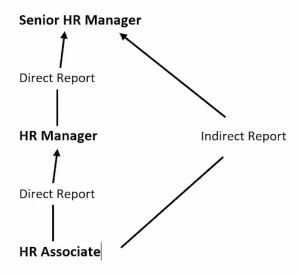Direct reports form a cornerstone in organizational hierarchies, crucial for effective leadership. But what are direct reports exactly, and why do they play such a crucial role in corporate structures? To understand what direct reports are we must understand interpersonal dynamics, leadership responsibilities, and the intricate interplay that defines the professional ecosystem. In this article, we’ll define direct reports and unveil the intricate layers that comprise this fundamental facet of organizational synergy.
Understanding Direct Reports: The Backbone of Effective Leadership
A direct report refers to an employee who is directly under the supervision and management of a particular individual, typically a manager or team leader. In simpler terms, it signifies the professional relationship between a superior and their subordinate.
This arrangement establishes a direct line of responsibility, with the direct report looking to their manager for guidance, feedback, and task assignments.
Direct reports can include a range of positions, such as team members, subordinates, or individuals within a specific department or unit. The scope may vary based on the organization’s size, structure, and operational requirements. Typically, anyone within the reporting line of a manager, with the manager having a direct influence on their day-to-day activities, is considered a direct report.
In essence, a direct report is an integral part of a manager’s team, representing a crucial link in the chain of command. This dynamic fosters a structured and organized work environment, where each individual’s roles and responsibilities are clearly defined within the broader framework of the company’s objectives. Understanding what a direct report is, therefore, becomes indispensable for effective leadership and the cultivation of a collaborative and efficient workplace culture.
Top Benefits of Direct Reports: Building Stronger Teams
The utilization of direct reports in organizational structures serves as a strategic imperative, offering a myriad of benefits that contribute to the efficiency, productivity, and overall success of a team or department. Here are compelling reasons why incorporating direct reports is integral to effective leadership and organizational functionality.
⛓️ Clear chain of command
The concept of direct reports establishes a structured hierarchy, providing a clear and defined chain of command. This clarity is essential for efficient decision-making, accountability, and streamlined communication within the organization.
⬇️ Effective delegation
With direct reports, managers can delegate tasks and responsibilities with precision. This facilitates the distribution of work according to individual strengths and expertise, maximizing the overall efficiency of the team.
🤝 Personalized guidance and development
Direct reports benefit from personalized guidance and mentorship from their immediate supervisors. This one-on-one interaction fosters professional development, skill enhancement, and a deeper understanding of individual career goals.
📈 Performance management
Direct reports serve as focal points for a performance review. Managers can assess the progress, achievements, and challenges of each team member, enabling targeted feedback and strategic planning for continuous improvement. When cultivating strong relationships with direct reports, building referent power—grounded in trust and respect—becomes a valuable tool, enabling effective influence and collaboration within the team.
🗣️ Enhanced communication
The direct report structure promotes effective communication channels. Managers can convey expectations, provide feedback, and address concerns directly, minimizing misunderstandings and fostering a transparent work environment.
👥Team cohesion
By having a set of direct reports, managers can cultivate a sense of team cohesion. This structure facilitates collaboration and encourages a shared commitment to common goals, creating a more unified and harmonious work atmosphere.
🧠 Strategic alignment
Direct reports enable managers to align individual and team objectives with broader organizational goals. This alignment ensures that every team member’s efforts contribute to the overarching mission and vision of the company.
💪 Adaptability and responsiveness
The direct report model allows for swift adaptation to changes and challenges. Managers can quickly reallocate tasks, redistribute responsibilities, and address issues promptly, enhancing the team’s overall responsiveness.
In essence, the strategic use of direct reports optimizes people management practices, promoting a cohesive, efficient, and adaptable work environment that is well-positioned for sustained success.
Direct vs Indirect Reports: Key Differences Explained
To fully comprehend the dynamics of organizational structures, it’s essential to distinguish between direct/indirect reports. Let’s delve into the definitions and nuances that differentiate these two concepts.
Direct report definition
A direct report, as previously outlined, is an employee who reports directly to a specific manager or supervisor. This relationship establishes a clear and immediate line of authority, with the manager directly overseeing the work, progress, and performance of the individual. The direct report is typically within the same department or team, forming an integral part of the manager’s immediate workforce.
Indirect report definition
On the other hand, an indirect report refers to an employee who does not report directly to a particular manager but may still be influenced by or connected to that manager’s team or projects. Indirect reports often fall under a different department or may work on separate initiatives. While the manager may not have direct oversight, they can still exert influence, offer guidance, or collaborate with these individuals on shared objectives.
Key differences
The primary distinction lies in the directness of the reporting relationship. Direct reports have a formal reporting structure directly tied to a specific manager, whereas indirect reports may have a more loosely connected or shared reporting relationship. Direct reports are typically more integrated into the day-to-day operations of a manager’s team, while indirect reports may work across different teams or functions within the organization.

Understanding the difference between direct and indirect reports is crucial for effective management, communication, and organizational coordination. Managers must navigate both structures adeptly to ensure optimal collaboration and productivity across the broader spectrum of their responsibilities.
Expert Tips to Manage Direct Reports for Peak Team Performance
❗ Establish clear expectations
Clearly articulate the responsibilities and expectations for each direct report. Develop job descriptions that outline key tasks, goals, and performance metrics. Regularly revisit and communicate any changes to ensure everyone is on the same page. This clarity promotes accountability and reduces the likelihood of misunderstandings.
❗ Encourage open communication
Create an atmosphere where open communication is valued. Schedule regular one-on-one meetings to discuss progress, challenges, and career aspirations. Actively listen to your direct reports, provide a platform for them to express their ideas and concerns, and be receptive to feedback. Open communication fosters trust and a positive working relationship.
❗ Provide constructive feedback
Feedback is a powerful tool for professional development. Provide feedback that is specific, actionable, and focused on both achievements and areas for improvement. Aim for a balance between positive reinforcement and constructive criticism, creating an environment where direct reports feel supported in their growth.

❗ Facilitate skill development
Identify opportunities for skill development based on both individual and organizational needs. Offer training programs, and mentorship opportunities, and encourage continuous learning. By investing in the professional growth of your direct reports, you not only enhance their capabilities but also contribute to the overall resilience and adaptability of the team.
❗ Delegate wisely
Effective delegation involves understanding the strengths and capabilities of each direct report. Assign tasks that align with their skills and developmental goals. Provide clear instructions, set expectations, and establish check-in points. Avoid micromanaging to empower your direct reports, allowing them to take ownership of their work.
❗ Promote team collaboration
Create an environment that fosters collaboration among direct reports. Encourage cross-functional communication, knowledge-sharing, and collaborative problem-solving. Team cohesion enhances creativity and productivity, leading to a more dynamic and resilient work environment.
❗ Recognize and reward achievements
Acknowledge the accomplishments of your direct reports regularly. Recognition can take various forms, including public praise, awards, or small gestures of appreciation. Celebrating achievements not only boosts morale but also reinforces positive behavior, motivating your team to consistently excel.
Make sure to celebrate your workers by setting up an employee appreciation day!

❓ How to ask direct reports to do something
When requesting tasks from direct reports, it’s crucial to communicate clearly and respectfully. Clearly outline the task, its importance, and any relevant deadlines. Use a collaborative tone, inviting questions and input. Effective communication builds trust and ensures that expectations are understood.
❓ How many direct reports to have
The optimal number of direct reports can vary based on factors such as the complexity of tasks, the manager’s experience, and the organization’s structure. As a general guideline, it’s recommended to balance workload and maintain effective communication. While there is no one-size-fits-all answer, most experts suggest that a manager can effectively oversee 5 to 10 direct reports, allowing for personalized attention and effective management without becoming overwhelmed. However, the specific circumstances of each role and organization should be considered when determining the ideal number of direct reports. Regular assessments and adjustments can help optimize managerial effectiveness.
Conclusion
In summary, effective management (of any management style) of direct reports is crucial for cultivating a thriving workplace. By setting clear expectations, fostering open communication, and providing constructive feedback, leaders can build a dynamic and resilient team. Encouraging skill development, wise delegation, and promoting collaboration contribute to a positive work culture.
As you can see, recognizing achievements, understanding how to communicate tasks, and determining an optimal number of direct reports further refine managerial skills. In essence, adept management of direct reports ensures individual and collective success, fostering a workplace that excels in innovation, adaptability, and sustained excellence. Learn what leadership activities can help you become a better manager!
If you are managing a team of 5 or more and looking to boost efficiency, Everhour is the perfect tool to keep your team on track. With seamless time tracking, you can easily estimate task durations, set clear budgets, and generate detailed reports inside Asana, Trello, Jira, or any other pm tool. Everhour, one of the best time tracking software and a powerful time tracker, streamlines the management of direct reports and employees.

